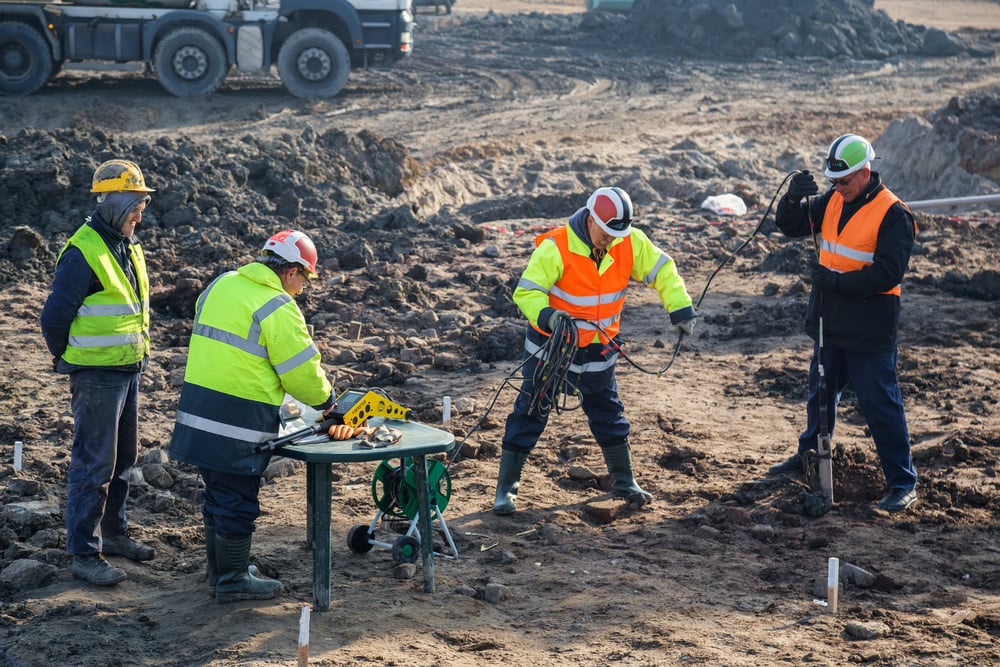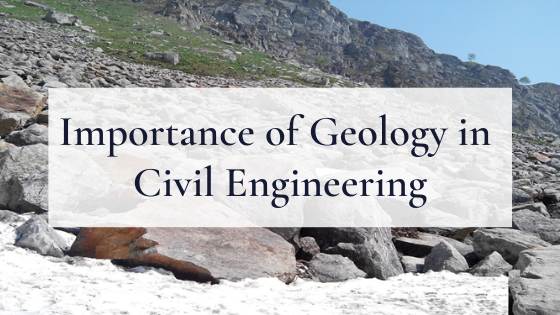How Specialized Geotechnical Engineering Solutions can Save You Time, Stress, and Money.
Table of Contents5 Easy Facts About Specialized Geotechnical Engineering Solutions ExplainedThe Of Specialized Geotechnical Engineering SolutionsThe Best Strategy To Use For Specialized Geotechnical Engineering SolutionsThe Single Strategy To Use For Specialized Geotechnical Engineering Solutions7 Easy Facts About Specialized Geotechnical Engineering Solutions ExplainedGetting The Specialized Geotechnical Engineering Solutions To Work
William Rankine, a designer and physicist, established an alternate to Coulomb's earth stress theory. Albert Atterberg developed the clay uniformity indices that are still used today for dirt category. In 1885, Osborne Reynolds acknowledged that shearing causes volumetric extension of dense materials and tightening of loosened granular materials. Modern geotechnical design is stated to have started in 1925 with the publication of Erdbaumechanik by Karl von Terzaghi, a mechanical engineer and geologist. Terzaghi also created the structure for theories of birthing capacity of structures, and the theory for prediction of the price of settlement of clay layers due to combination. Afterwards, Maurice Biot completely developed the three-dimensional dirt consolidation concept, extending the one-dimensional design formerly established by Terzaghi to extra general theories and introducing the set of standard equations of Poroelasticity.
Geotechnical engineers explore and establish the buildings of subsurface conditions and materials. They likewise make corresponding earthworks and retaining frameworks, passages, and structure structures, and might monitor and evaluate sites, which may better involve site monitoring along with the risk assessment and mitigation of all-natural hazards. Geotechnical designers and engineering rock hounds do geotechnical investigations to acquire details on the physical buildings of soil and rock hidden and beside a site to make earthworks and foundations for proposed structures and for the fixing of distress to earthworks and frameworks created by subsurface problems.
Some Known Questions About Specialized Geotechnical Engineering Solutions.
, which uses a thick-walled split spoon sampler, is the most typical means to collect disrupted samples.

Commonly, the interface's exact geometry is unknown, and a streamlined user interface geometry is assumed. Finite slopes need three-dimensional designs to be analyzed, so most slopes are assessed thinking that they are definitely wide and can be represented by two-dimensional models.
Excitement About Specialized Geotechnical Engineering Solutions

Dimension of quantities and analysis of actual conditions. It is unsuitable for jobs whose design can not be modified during building.
Concepts of Geotechnical Engineering. Thomson Understanding. Budhu, Muni (2007 ). Soil Mechanics and Foundations. John Wiley & Sons, Inc. . ISBN 978-0-471-43117-6. Disrupted soil properties and geotechnical layout, Schofield, Andrew N., Thomas Telford, 2006. Guerriero V., Mazzoli S. (2021 ). "Concept of Effective Anxiety in Soil and Rock and Ramifications for Fracturing Processes: A Testimonial".
Specialized Geotechnical Engineering Solutions Fundamentals Explained
Principles and Method of Ground Enhancement. Ground Improvement Concepts And Applications In Asia. Design evaluation in rock technicians.
Cengage Knowing, Stamford, 666 p. Atkinson, J., 2007. The auto mechanics of soils and foundations. Taylor & Francis, N.Y., 442 p. Drifting Offshore Wind Wind Turbines: Responses in a Sea state Pareto Optimal Designs and Economic Evaluation, P. Sclavounos et al., October 2007. Nicholson, D, Tse, C and Dime, C. (1999 ). The Observational Method in ground design principles and applications.
The Of Specialized Geotechnical Engineering Solutions
These reports are tailored to satisfy the specific needs of a job and consist of style specifications and suggestions for the building and construction of a series of manufactured frameworks. As offering consultancy services covering areas such as slope security and load-bearing abilities for various products, these designers embark on research study and advancement activities to enhance approaches, devices, materials knowledge and analysis covering whole lifecycles.
Design the homes and auto mechanics of rocks including the application of dynamics, liquid auto mechanics, kinematics and product auto mechanics. This combines geology, soil have a peek at this site and rock technicians, and structural engineering for the design and building of structures for an array of civil engineering tasks. This area includes predicting the performance of structure soil and rock to a load enforced by a framework, while taking into consideration performance, economy and safety.
Prices of pay normally boost as your knowledge and abilities grow, with standards directing to a graduate starting income of between 18,000 and 28,000 per year in the UK. This increases to check my blog 26,000 to 36,000 with a few years of experience and after that reaching 40,000 to 60,000+ for elderly, chartered or master designers.
How Specialized Geotechnical Engineering Solutions can Save You Time, Stress, and Money.
With the best application it is feasible to grasp the career and gain entry to a challenging yet fulfilling and crucial job. A rock hound would need to retrain to end up being a geotechnical designer, although there is a lot of cross-over in between both careers, which might make this much easier. Geologists need to have an understanding of soils, rocks and various other products from a clinical viewpoint, while geotechnical designers tale their expertise of issues such as soil and rock technician, geophysics and hydrology and use them to design and ecological projects.
When starting, these engineers will have a tendency to work with less complicated projects, accumulating understanding and experience prepared for more challenging job later on. Geotechnical engineers have a tendency to specialise in particular areas as they expand in experience, concentrating on certain infrastructures such as trains, roads or water. These designers additionally collaborate with renewable resource, offshore and onshore oil and gas, nuclear power, and much more.